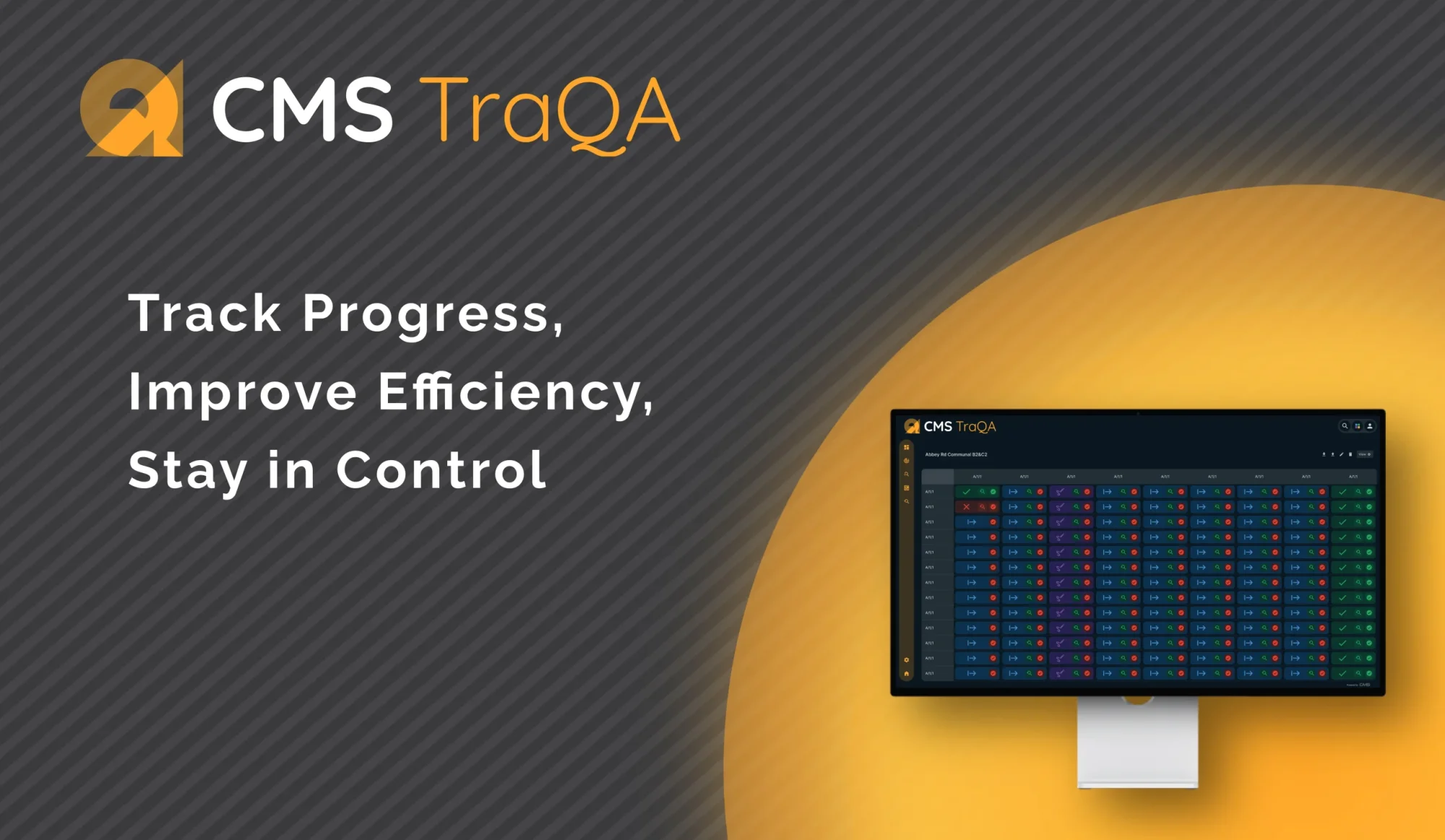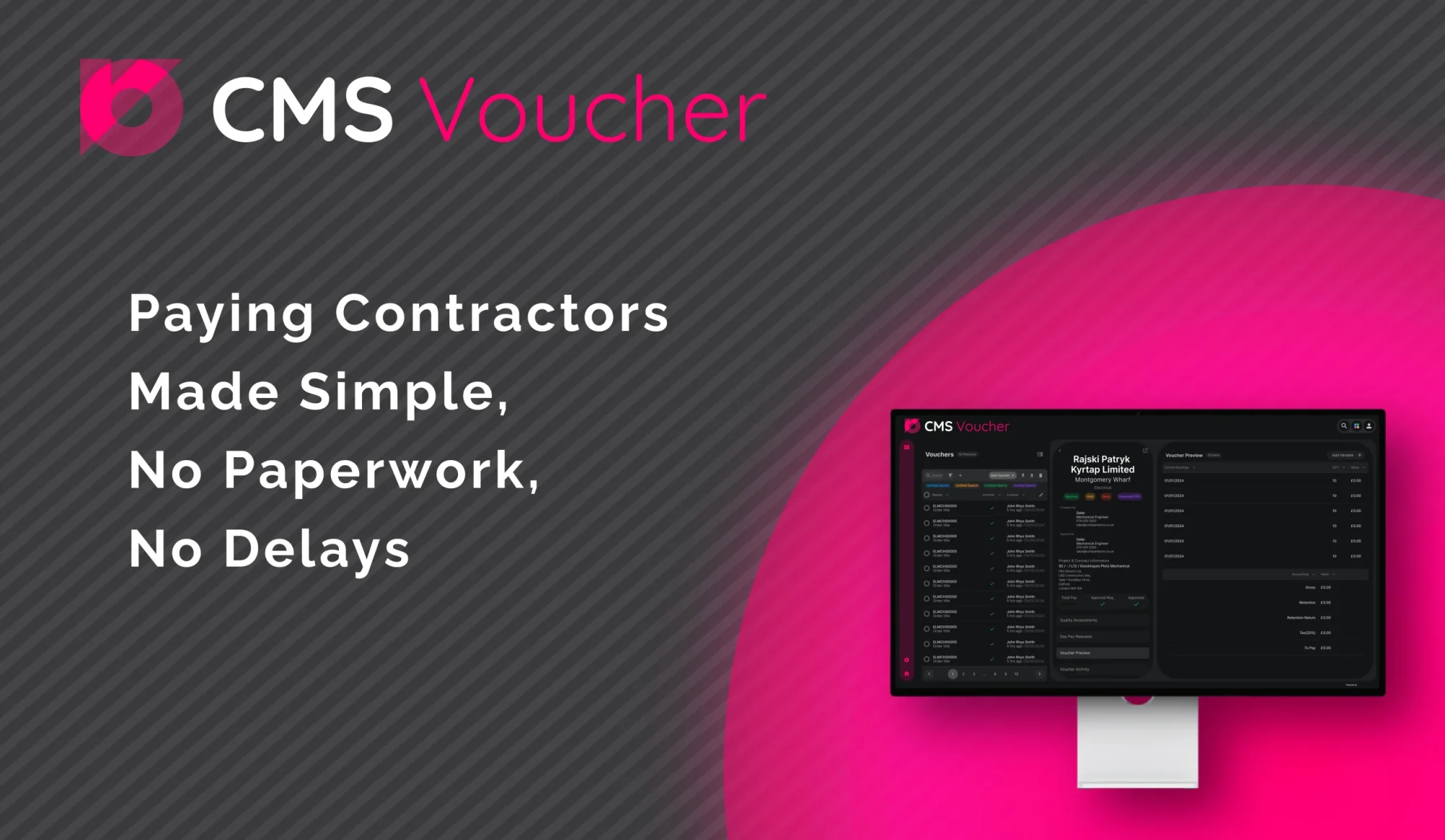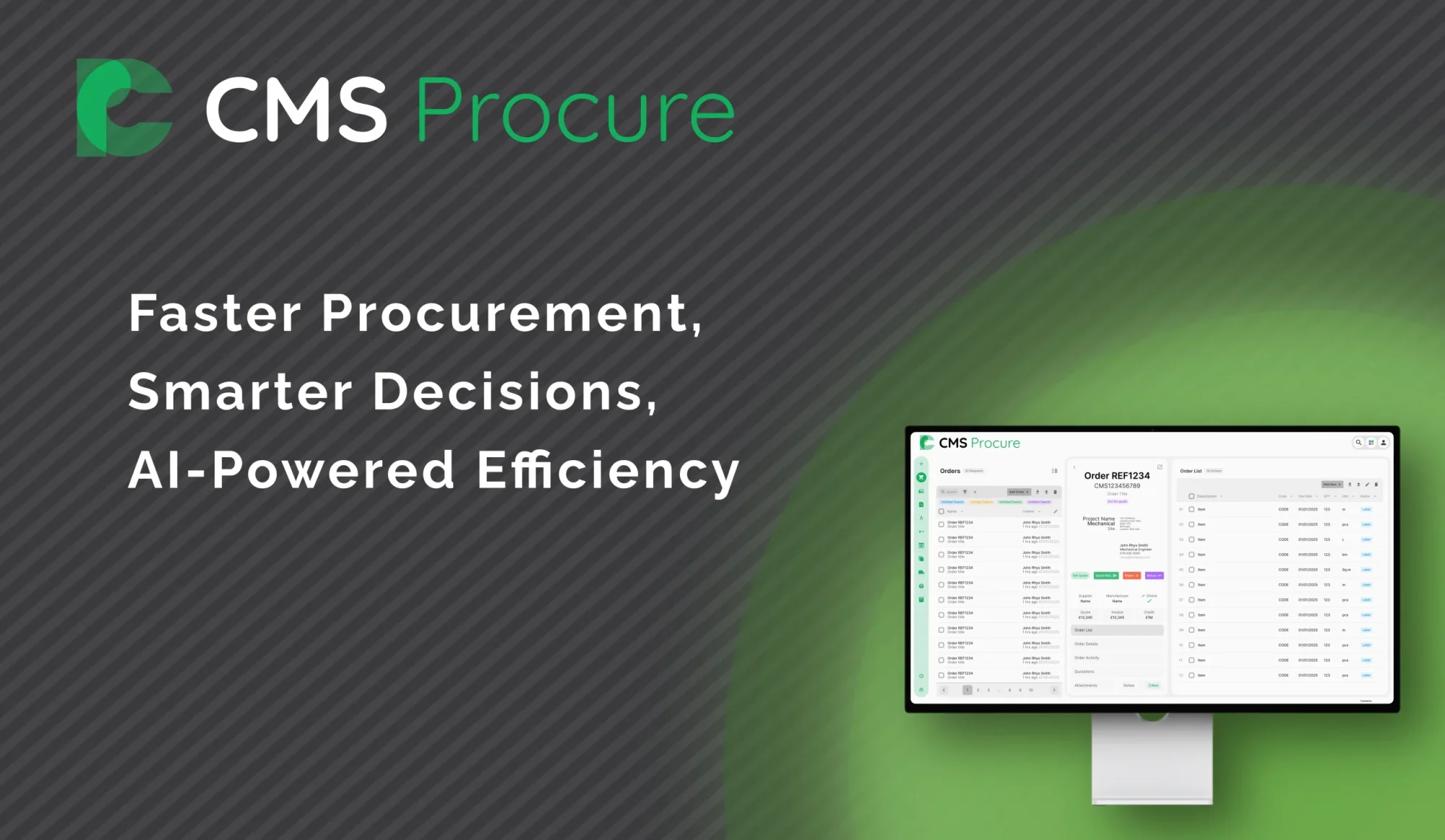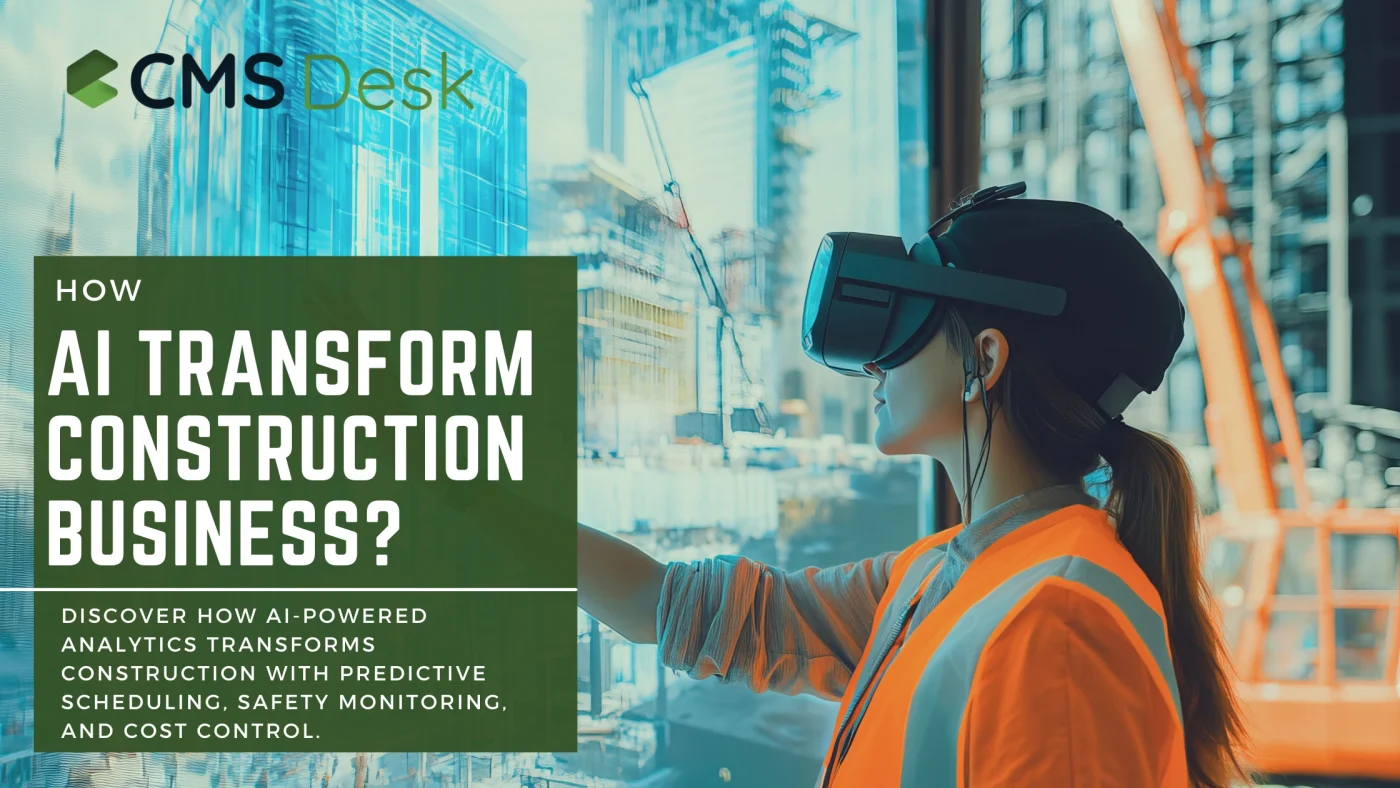
The construction industry is entering a new era where data is no longer just recorded—it’s analysed, predicted, and acted upon in real time. With razor-thin margins, rising project complexity, and increasing regulatory demands, contractors can no longer rely solely on traditional methods of planning and monitoring. This is where AI-powered analytics in construction comes in. By transforming raw data into actionable insights, AI enables construction businesses to improve productivity, safety, cost control, and project delivery timelines.
From predictive scheduling and risk forecasting to computer-vision safety monitoring and automated quality control, the potential of AI goes beyond efficiency; it’s reshaping the very foundation of how projects are managed. Forward-thinking firms that adopt AI today are not just staying competitive; they’re building a future-ready construction business.
What Is AI-Powered Analytics in Construction?
AI-powered analytics in construction uses machine learning, computer vision, and generative AI to turn jobsite, BIM, schedule, cost, and supply-chain data into insights that predict risk, optimise schedules, and automate routine decisions. In practice, that means ingesting data from BIM/CDEs, RFIs, daily logs, sensors/IoT, drones, photos/video, and ERP—then applying models to forecast outcomes (e.g., delays, overruns) or take actions (e.g., re-sequence work, flag safety hazards). Recent industry surveys show construction firms are accelerating digital adoption and exploring AI specifically for safety, quality, estimating, and PMO functions.
Why now? Mature cloud collaboration, cheaper compute/vision models, and clearer value cases (schedule reliability, risk control, sustainability reporting) have moved AI from pilot to production in many AEC/O firms—though trust and governance remain front-of-mind for leaders.
Key Benefits of AI for Construction Businesses
AI-powered analytics is not just a futuristic concept. It is already delivering measurable value on projects today. From keeping schedules on track to controlling budgets and reducing safety risks, the technology gives contractors a clearer, data-driven view of their operations. By analysing patterns across past and current projects, AI highlights issues before they escalate and provides practical recommendations that teams can act on immediately. The result is a smarter, safer and more profitable way to manage construction projects.
Schedule reliability & productivity
Predictive models learn from prior projects and live progress data to anticipate slippage and propose resequencing that protects critical path activities. Some vendors and investors cite material delay and rework reductions as adoption drivers, particularly on complex commercial and infrastructure jobs.
Cost control & more accurate estimating
Pattern recognition across historical bids, production rates, and change orders improves cost estimation and earned value tracking; analytics can surface early signals of budget drift for PMs and commercial teams. Independent market and industry outlook reports point to cost and margin protection as the most cited ROI levers for AI programs.
Safety performance
Computer-vision systems detect PPE non-compliance, proximity hazards, and unsafe behaviours from site cameras or drone imagery, enabling real-time alerts and trending analysis. Meta-analyses and field studies report meaningful reductions in incidents when AI safety monitoring is deployed.
Quality & defect prevention
Vision models and anomaly detection flag workmanship issues early (e.g., mis-installed components vs. BIM), reducing downstream rework and warranty exposure. This capability is frequently grouped with safety as a top AI use-case in AEC surveys.
Sustainability & materials optimisation
AI helps teams select low-carbon alternatives, optimise logistics, and cut idle time and waste—supporting embodied carbon and ESG (Environmental, Social, and Governance) reporting requirements. Industry spotlights highlight sustainability as a growth area for AI analytics across the build lifecycle.
Real-World Applications of AI in Project Management
AI in construction is no longer limited to theory or pilot projects. It is being applied on active sites every day to help project managers and teams make better decisions in real time. From tracking progress with greater accuracy to predicting risks and improving safety, AI-powered tools are changing how projects are delivered. Below are some of the most practical ways AI is already transforming project management in construction.
- Progress tracking & variance detection:
Computer vision compares as-built imagery with 4D/5D plans to quantify progress and detect deviations, giving PMOs objective status and forecasting power. Funding and traction around AI progress-tracking platforms underscore adoption on large sites.
- Risk prediction & “look-ahead” planning:
Models trained on schedules, weather, subcontractor performance, and daily logs flag high-risk activities and recommend mitigations (extra crew, resequencing, alternate suppliers). Early industry research and best-practice guides describe tangible wins in delay avoidance.
- Safety monitoring & automated permits-to-work checks:
Vision systems identify PPE issues, zone breaches, or unsafe equipment interaction; NLP models scan method statements and permits to enforce controls. Reviews of 150+ papers show this is one of the most advanced AI domains in construction.
- Estimating, bidding & change-order analytics:
AI analyses drawings/specs/RFIs to auto-extract quantities, estimate production rates, and stress-test margins. Organisations report using gen-AI assistants to draft scopes, method statements, and BOQs (Bill of Quantities) faster—while analytics watch for scope creep. Industry surveys track steady movement from experimentation to value realisation.
- Quality & punch-list automation:
Mobile apps plus vision models auto-generate snag lists, route actions, and verify close-out, shrinking punch durations and handover friction—an area repeatedly highlighted in AEC market reports.
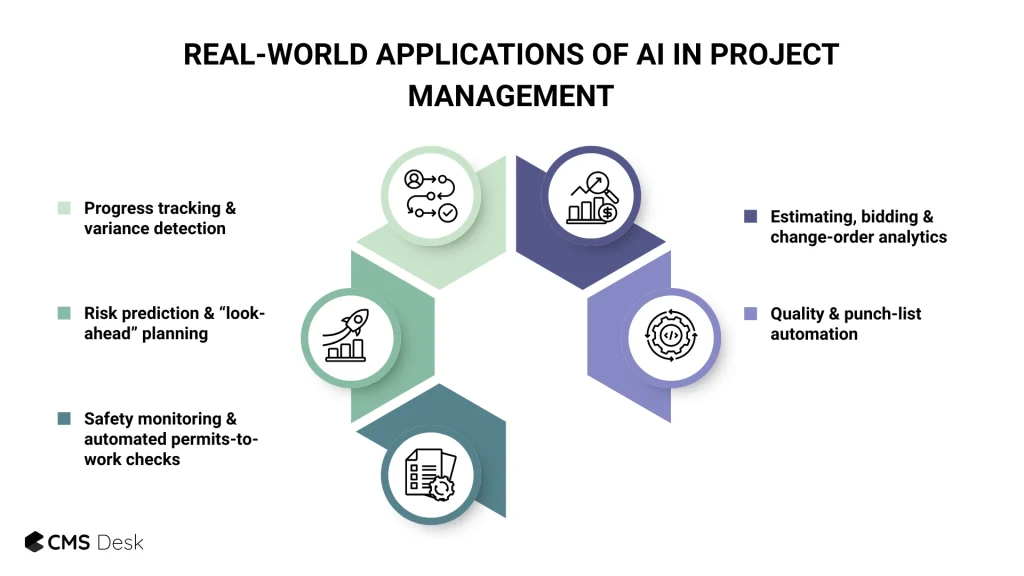
Challenges and Considerations for Adoption
While the benefits of AI in construction are significant, successful adoption is not without obstacles. Many firms struggle with data silos, skills gaps, and concerns about trust or governance. Understanding these challenges is essential for making informed decisions and building a roadmap that delivers long-term value.
- Data quality & interoperability
Fragmented datasets (BIM, schedules, field logs, ERP) reduce model accuracy. 2024–2025 reports call for robust information management and cross-phase integration to unlock AI value—along with standard taxonomies and CDE discipline.
- Trust, governance, and ethics
Construction leaders’ trust in AI dipped year-over-year, citing concerns about data integrity, explain ability, and IP protection. Clear governance (data retention, audit trails, access control) and a “trusted AI” blueprint are now table stakes.
- Change management & skills
Teams need upskilling (data literacy, prompt craft, vision model basics) and new roles (AI product owner, construction data engineer). Independent guides for contractors emphasise structured rollout, pilot-to-scale playbooks, and field-ready training.
- Vendor selection & ROI proof
Start with use-cases tied to measurable outcomes (e.g., schedule variance, incident rate, rework cost). Require sandbox trials with your project data, and verify security posture and integrations (BIM/CDE, scheduling, ERP). Market coverage warns against “AI-washing” and recommends ROI gates at each scale step.
- Regulatory and contractual implications
AI outputs may affect duty of care, evidence chains, and subcontract terms (e.g., who “owns” an AI-flagged issue). Sector bodies encourage ethical adoption and lifecycle thinking as you formalise use in contracts.
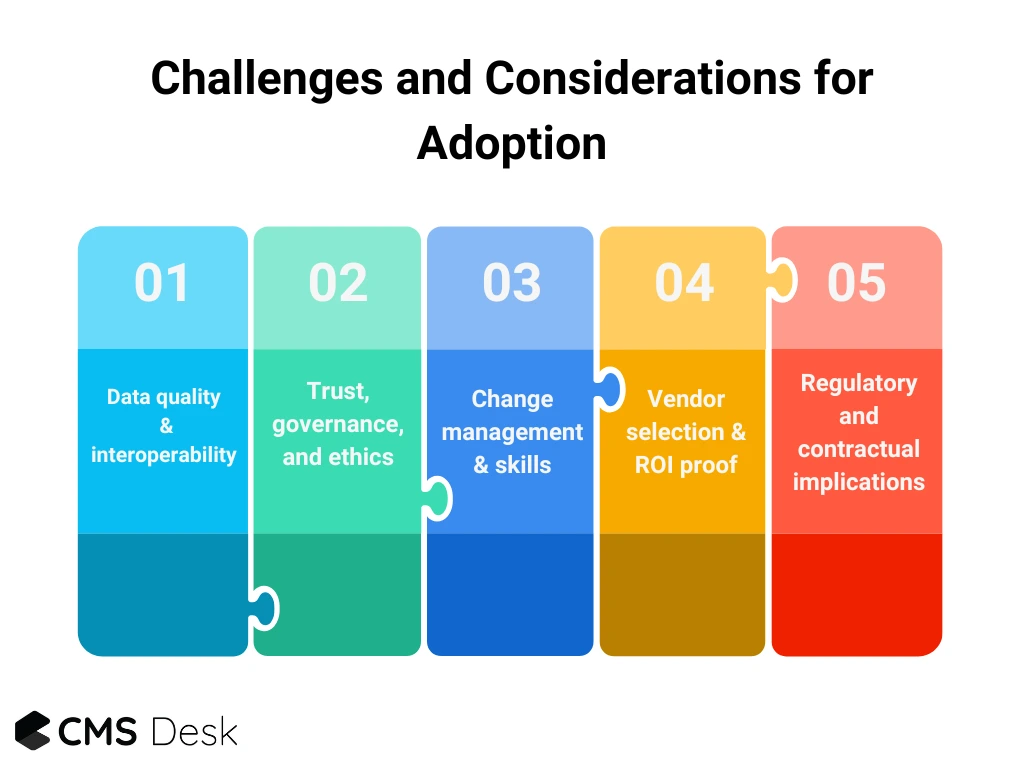
The Future of AI in Construction
AI in construction is moving quickly from early adoption to becoming a standard part of everyday project management. The next wave will focus on making tools more intuitive, more integrated and more proactive. Instead of relying only on dashboards and reports, teams will gain access to intelligent copilots and autonomous systems that guide decisions in real time.
- From dashboards to copilots:
Gen-AI copilots embedded in PM, estimating, and field apps will summarise issues, answer RFIs, and auto-draft paperwork while grounding responses in project data. Broad cross-industry surveys show rapid mainstreaming of gen-AI usage.
- Vision-first jobsites & autonomous workflows:
Always-on computer vision plus IoT will give near-real-time digital twins of progress, safety, and quality, enabling closed-loop adjustments to plans and resources. Investor and startup activity around progress tracking and site intelligence supports this trajectory.
- Sustainability analytics by default:
Carbon, waste, and circularity metrics will become standard in AI planning tools—optimising materials and methods automatically to hit client and regulatory targets. Recent construction spotlights place sustainability alongside efficiency as a core AI outcome.
- Consolidation and enterprise readiness:
Major platforms are reorganising to prioritise AI and platform capabilities, signalling more native AI features in the tools you already use.
AI-Enabled Platforms Are Already Here
Today, construction software and apps are rapidly integrating AI features to improve accuracy, reduce mistakes, cut costs, and speed up project delivery. Instead of waiting to design a complex adoption roadmap, contractors can start benefiting immediately by choosing solutions that have AI built in. CMS Desk is one of the most powerful construction management platforms that integrates AI across procurement, payments, quality, and site collaboration — helping teams minimise errors, control budgets, and deliver projects with greater confidence.
Frequently Asked Questions (FAQ)
1. Is AI only for large contractors?
No. SMEs benefit from packaged analytics (SaaS), especially for safety, progress tracking, and estimating. Surveys show adoption across firm sizes as tools get easier to deploy.
2. What kind of data do we need?
Start with BIM models, schedules, RFIs/daily logs, and site imagery. Better metadata and consistent IDs dramatically improve results. Industry guidance emphasises information management as the foundation.
3. How quickly can we see ROI?
Pilot projects often demonstrate value within a single phase (e.g., fewer safety incidents, more reliable look-ahead). Published case studies and reviews report measurable gains when vision and predictive tools are used consistently.
4. Are there risks around data privacy and IP?
Yes—address with a trusted AI framework: tenant isolation, access controls, audit trails, and clear data-use policies with vendors. Leaders cite trust as a gating factor and are adopting explicit AI protocols.
5. Will AI replace project managers or engineers?
AI is best at pattern detection and automation; humans still lead planning, stakeholder management, and judgment. Most research frames AI as an augmentation—a copilot, not a replacement.
Any questions? Get in Touch
